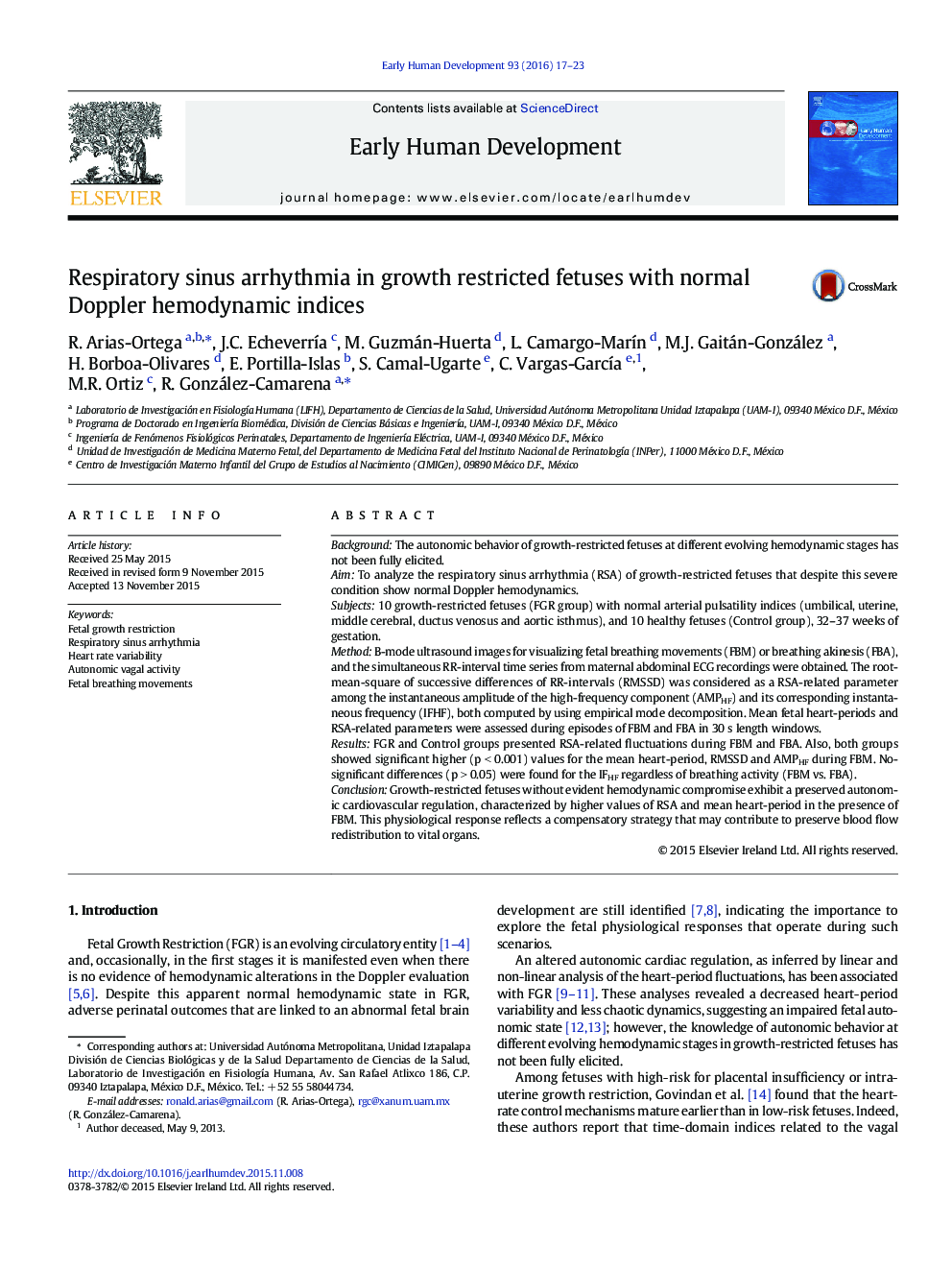| کد مقاله | کد نشریه | سال انتشار | مقاله انگلیسی | نسخه تمام متن |
|---|---|---|---|---|
| 3916555 | 1599473 | 2016 | 7 صفحه PDF | دانلود رایگان |

• Fetal growth restriction studies usually report decreased heart-period variations.
• RSA was studied in growth-restricted fetuses with normal Doppler hemodynamics.
• Fetal heart-period variations were studied during akinesis and breathing movements.
• RSA and vagal response to FBM are preserved in these growth-restricted fetuses.
• This functional behavior may contribute to vital organs blood flow redistribution.
BackgroundThe autonomic behavior of growth-restricted fetuses at different evolving hemodynamic stages has not been fully elicited.AimTo analyze the respiratory sinus arrhythmia (RSA) of growth-restricted fetuses that despite this severe condition show normal Doppler hemodynamics.Subjects10 growth-restricted fetuses (FGR group) with normal arterial pulsatility indices (umbilical, uterine, middle cerebral, ductus venosus and aortic isthmus), and 10 healthy fetuses (Control group), 32–37 weeks of gestation.MethodB-mode ultrasound images for visualizing fetal breathing movements (FBM) or breathing akinesis (FBA), and the simultaneous RR-interval time series from maternal abdominal ECG recordings were obtained. The root-mean-square of successive differences of RR-intervals (RMSSD) was considered as a RSA-related parameter among the instantaneous amplitude of the high-frequency component (AMPHF) and its corresponding instantaneous frequency (IFHF), both computed by using empirical mode decomposition. Mean fetal heart-periods and RSA-related parameters were assessed during episodes of FBM and FBA in 30 s length windows.ResultsFGR and Control groups presented RSA-related fluctuations during FBM and FBA. Also, both groups showed significant higher (p < 0.001) values for the mean heart-period, RMSSD and AMPHF during FBM. No-significant differences (p > 0.05) were found for the IFHF regardless of breathing activity (FBM vs. FBA).ConclusionGrowth-restricted fetuses without evident hemodynamic compromise exhibit a preserved autonomic cardiovascular regulation, characterized by higher values of RSA and mean heart-period in the presence of FBM. This physiological response reflects a compensatory strategy that may contribute to preserve blood flow redistribution to vital organs.
Journal: Early Human Development - Volume 93, February 2016, Pages 17–23